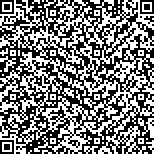| Quote
: |
冯雅娟, 贾晓沛, 吕山河, 李丹, 齐彩霞.电头针调控cAMP/PKA/CREB通路对急性缺血性脑卒中大鼠神经功能、行为学恢复的影响[J].湖南中医药大学学报英文版,2025,45(10):1893-1900.[Click to copy
] |
|
| |
|
|
| This paper
:Browser 155times Download 58times |
| 电头针调控cAMP/PKA/CREB通路对急性缺血性脑卒中大鼠神经功能、行为学恢复的影响 |
| 冯雅娟,贾晓沛,吕山河,李丹,齐彩霞 |
| (邯郸市第一医院康复医学科, 河北 邯郸 056004) |
| 摘要: |
| 目的 旨在探讨电头针对急性缺血性脑卒中(AIS)大鼠神经功能和行为学功能的影响,并初步探讨其潜在的作用机制。方法 采用中动脉闭塞(MCAO)法建立AIS大鼠模型。将造模成功的大鼠随机分为模型组、电头针组(取大鼠双侧顶颞前斜线处进行电头针干预)和通路抑制剂组[取大鼠双侧顶颞前斜线处进行电头针干预,同时腹腔注射10 μmol/L的环磷酸腺苷(cAMP)抑制剂H-89]。另选15只正常大鼠作为假手术组(假手术组大鼠不做插线栓处理)。治疗结束后,对各组大鼠进行神经功能损伤评估和神经行为学评估;TTC染色和HE染色分别检测大鼠脑梗死面积和脑组织病理损伤;高尔基染色检测神经元树突棘密度;ELISA检测大鼠脑组织中cAMP水平;Western blot检测突触后致密蛋白95(PSD95)、突触蛋白1(Syn1)和蛋白激酶A(PKA)/cAMP应答元件结合蛋白(CREB)通路相关蛋白表达水平。结果 相较于假手术组,模型组大鼠神经元排列紊乱,细胞边界模糊不清,神经缺损评分、神经行为学评分、脑梗死面积增加(P<0.05),树突棘排列中断,树突棘密度及Syn1、PSD95、cAMP、p-PKA、磷酸化CREB(p-CREB)水平降低(P<0.05);相较于模型组,电头针组和通路抑制剂组神经元坏死和炎症浸润现象减轻,神经缺损评分、神经行为学评分、脑梗死面积减少(P<0.05),树突棘密度及Syn1、PSD95、cAMP、p-PKA、p-CREB蛋白表达水平增加(P<0.05);相较于电头针组,通路抑制剂组大鼠神经缺损评分、神经行为学评分、脑梗死面积增加(P<0.05),树突棘排列较为分散,树突棘密度及Syn1、PSD95、cAMP、p-PKA、p-CREB蛋白表达水平降低(P<0.05)。结论 电头针能够改善AIS大鼠神经功能和行为学功能,增加突触可塑性,所涉及的机制可能与激活cAMP/PKA/CREB信号通路有关。 |
| 关键词: 急性缺血性脑卒中 电头针 cAMP/PKA/CREB通路 突触可塑性 神经功能 行为学 |
| DOI:10.3969/j.issn.1674-070X.2025.10.012 |
| Received:July 16, 2025 |
| 基金项目:河北省医学科学研究课题计划资助项目(20251294)。 |
|
| Effects of scalp electroacupuncture on neurological function and behavioral recovery in rats with acute ischemic stroke via regulation of the cAMP/PKA/CREB pathway |
| FENG Yajuan, JIA Xiaopei, LYU Shanhe, LI Dan, QI Caixia |
| (Department of Rehabilitation Medicine, Handan First Hospital, Handan, Hebei 056004, China) |
| Abstract: |
| Objective To investigate the effects of scalp electroacupuncture on neurological and behavioral functions in rats with acute ischemic stroke (AIS), and to preliminarily explore its potential mechanism of action. Methods An AIS rat model was established by middle carotid artery occlusion (MCAO) method. Successfully modeled rats were randomly divided into a model group, a scalp electroacupuncture group (electroacupuncture intervention was applied at the bilateral anterior parietal-temporal oblique lines of rats), and a pathway inhibitor group [electroacupuncture was applied at the same sites combined with intraperitoneal injection of the cyclic adenosine monophosphate (cAMP) inhibitor H-89 (10 μmol/L)]. Fifteen normal rats were selected as the sham-operated group (without filament insertion). After the treatment, neurological deficit and neurobehavioral assessments were performed on rats in each group. Cerebral infarction area and histopathological damage in rat brain were assessed by TTC and HE staining, respectively. Golgi staining was used to assess the density of dendritic spines in neurons. ELISA kit was used to examine the cAMP level in rat brain tissue. Western blot was employed to measure the expression levels of postsynaptic density protein 95 (PSD95), synaptic protein 1 (Syn1), and proteins related to the protein kinase A (PKA)/cAMP-response element binding protein (CREB) pathway. Results Compared with the sham-operated group, the model group exhibited neuronal disorganization with unclear cell boundaries, higher neurological deficit and neurobehavioral scores, and increased cerebral infarction areas (P<0.05). The arrangement of dendritic spines was disrupted, and the density of dendritic spines, as well as the levels of Syn1, PSD95, cAMP, p-PKA, and phosphorylated CREB (p-CREB), were significantly reduced (P<0.05). Compared with the model group, both the scalp electroacupuncture and pathway inhibitor groups demonstrated alleviated neuronal necrosis and inflammatory infiltration, lower neurological deficit and neurobehavioral scores, and smaller cerebral infarction areas (P<0.05). Furthermore, the density of dendritic spines and the levels of Syn1, PSD95, cAMP, p-PKA, and p-CREB increased (P<0.05). Compared with the scalp electroacupuncture group, the pathway inhibitor group displayed higher neurological deficit and neurobehavioral scores, and larger cerebral infarction areas (P<0.05). The density of dendritic spines and the levels of Syn1, PSD95, cAMP, p-PKA, and p-CREB decreased (P<0.05). Conclusion Scalp electroacupuncture can improve neurological and neurobehavioral functions and increase synaptic plasticity in AIS rats. The mechanism may be related to the activation of cAMP/PKA/CREB signal pathway. |
| Key words: acute ischemic stroke scalp electroacupuncture cAMP/PKA/CREB pathway synaptic plasticity neurological function behavioristics |
|

二维码(扫一下试试看!) |
|
|
|
|


